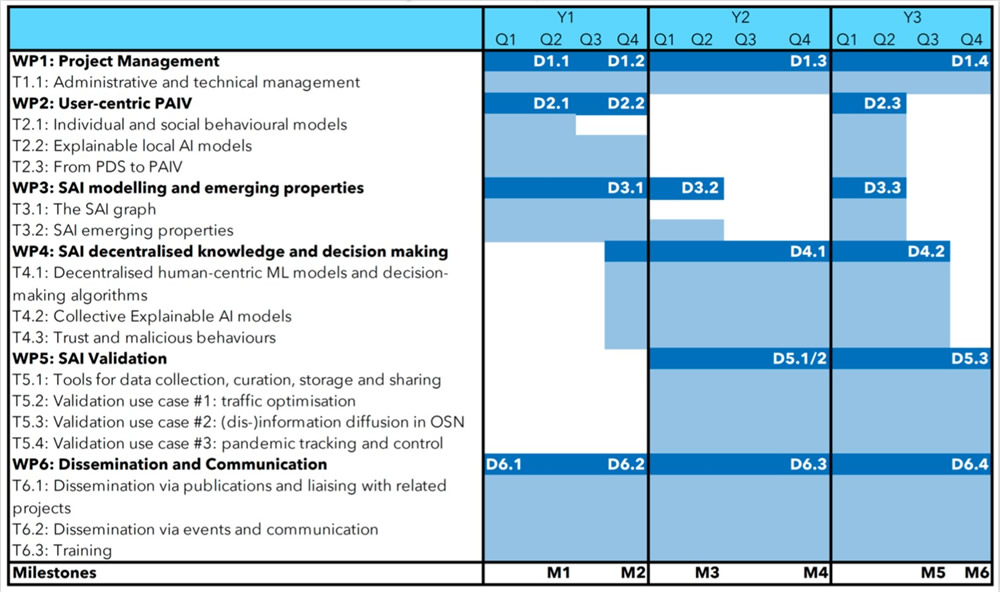The activities in SAI are organised according to the Gantt chart below.

- WP2 (user-centric PAIV) defines and develops the PAIV. It develops the
methodologies for explainable AI inside PAIV, the methods and interfaces for tailored access
to PAIV data and integrates existing PDS. Moreover, it identifies the human individual and
social behavioural models for integration in the SAI methodologies and algorithms.
- WP3 (SAI modelling and emerging properties) has two purposes. First, it
defines and characterises the SAI graph, based on the social networking models identified in
WP2. Second, it characterises, via both network science analysis and large-scale simulation,
the emerging properties of the collective SAI ecosystem. The key output of WP3 is a set of
abstractions and analytical tools for the analysis of the SAI graph and its emerging properties.
These will be used as performance evaluation tools in WP5, and also as components of the explainable
collective AI algorithms designed in WP4, e.g., as tools to cope with phenomena such as echo chambers,
filter bubbles and disinformation diffusion.
- WP4 (SAI decentralised knowledge) develops the methodologies and algorithms
for interaction between PAIVs. It defines decentralised ML algorithms, PAIVs interactions to
exchange data, knowledge, and take individual and collective decisions. It studies explainability
methodologies for the SAI collective processes. It evaluates the performance of the specific
components via analysis and simulation, and studies their robustness against malicious behaviours.
- WP5 (validation) provides the test bench (fourth pillar). The most promising
scientific and technological solutions investigated in WP2-WP4 are iteratively tested in the use
cases identified in WP5, and the feedback provided by WP5 to the foundational WPs is used to improve
algorithms and models until a satisfactorily consolidated solution is identified. Specifically, WP5
validates the SAI approaches using trace-driven simulation in three use cases:
- traffic optimisation,
- (dis-)information diffusion in OSNs, in multiple EU languages (e.g., Italian, Greek,
Polish and English),
- pandemic tracking and control.








